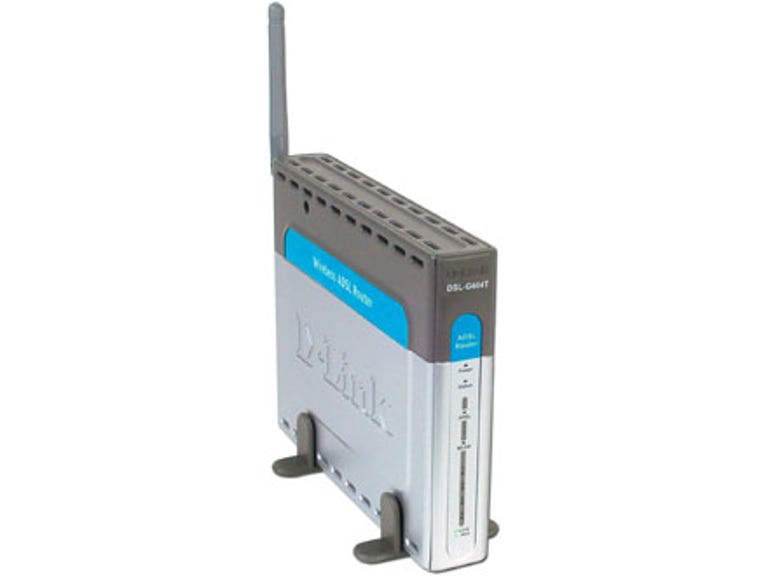 Why You Can Trust CNET
Why You Can Trust CNET D-Link DSL-G604T review: D-Link DSL-G604T
D-Link's DSL-G604T is a ADSL2/2+ modem router with some serious stability issues. Read our Australian review.
Design
What can we say about the DSL-G604T's design that we haven't said about every other router we've reviewed this year? Well, as it happens, it does have some redeeming visual features that mark it out from the pack. But first, the dull stuff. One side, you'll find little blinky lights -- lots of them, indicating network activity, DSL status and power. On the reverse side, ports -- five of them, one for your ADSL connection, and four very standard, very boring 10/100 Ethernet ports, as well as a standard antenna screw, which just so happens to fit the semi-flexible antenna you'll find in the DSL-G604T's box. What a wacky coincidental world we live in.
The Good
The Bad
The Bottom Line
So what makes the DSL-G604T stand out if it's such an ordinary feature-set modem? It's the fact that it's been pretty obviously designed for vertical positioning. To that end, rather than a Playstation 2-esque socket style stand, the DSL-G604T instead comes with two holding clips that attach to the cut-in grooves that run along the top and bottom sides of the router.
Features
The DSL-G604T is an ADSL2/2+ modem, router and firewall, with support for 802.11g networking, and therefore 802.11b backwards compatibility as well. On the wireless security front, it has support for WEP (64, 128 and 256bit), WPA, WPA-PSK, but no WPA2 support. On the wired connectivity front, it comes with four 10/100 wired Ethernet ports, which is absolutely, resolutely stock standard for just about every router you're currently likely to buy.
Performance
Installation of the DSL-G604T is performed purely via the unit's web interface, with a small bit of help from the slender Quick Installation Guide. A provided CD gives you the obligatory PDF manual and another copy of the same Quick Install Guide, just in case you lose the paper version. The Web interface includes a fairly user-friendly installation Wizard, although we did hit some quirks using it under Firefox 1.5, as some of the pop-up dialogue boxes failed to appear; Internet Explorer didn't share this issue.
We also hit one quirk with the install wizard that concerned us a touch more. While configuring the router via the wizard wirelessly, it gave us no option to enable wireless security in the first instance, although the diagram in the Quick Installation Guide suggested it should be there. If you can handle Web router interfaces it's a fairly trivial matter to correct, and it's definitely worthwhile remembering to enable wireless security, even if it's only to stop opportunists leeching off your broadband connection.
We initially hit some stability problems with the DSL-G604T, including some self-initiated reboots that tended to wipe the unit's memory -- annoyingly on one occasion it lost its security settings but remembered our ISP ones, opening itself up to the wider world. A quick trip to D-Link's local Web Site revealed an available firmware upgrade -- we moved from the v2.00B03.AU firmware to the v2.00B06.AU firmware -- but even this didn't resolve all of our connection issues. We're well used to consumer-level routers being less robust than their enterprise counterparts, but the DSL-G604T sat on the poor side of the fence when it came to overall stability. Hopefully future firmware upgrades will improve this.
We're seeing plenty of ADSL2/2+ modem routers aimed at the home/small office market here at CNET.com.au, and essentially speaking, the DSL-G604T is just another one. That's not a bad thing per se, and once we'd ironed out our firmware issues we were largely happy with the DSL-G604T's performance; at the very least another ADSL2/2+ product on the market should keep up the pressure to lower prices on all products.



